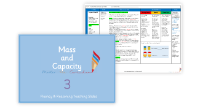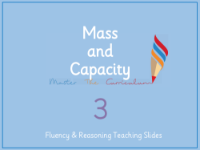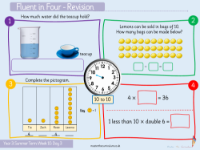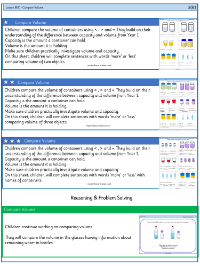Mass and capacity - Compare volume - Planning
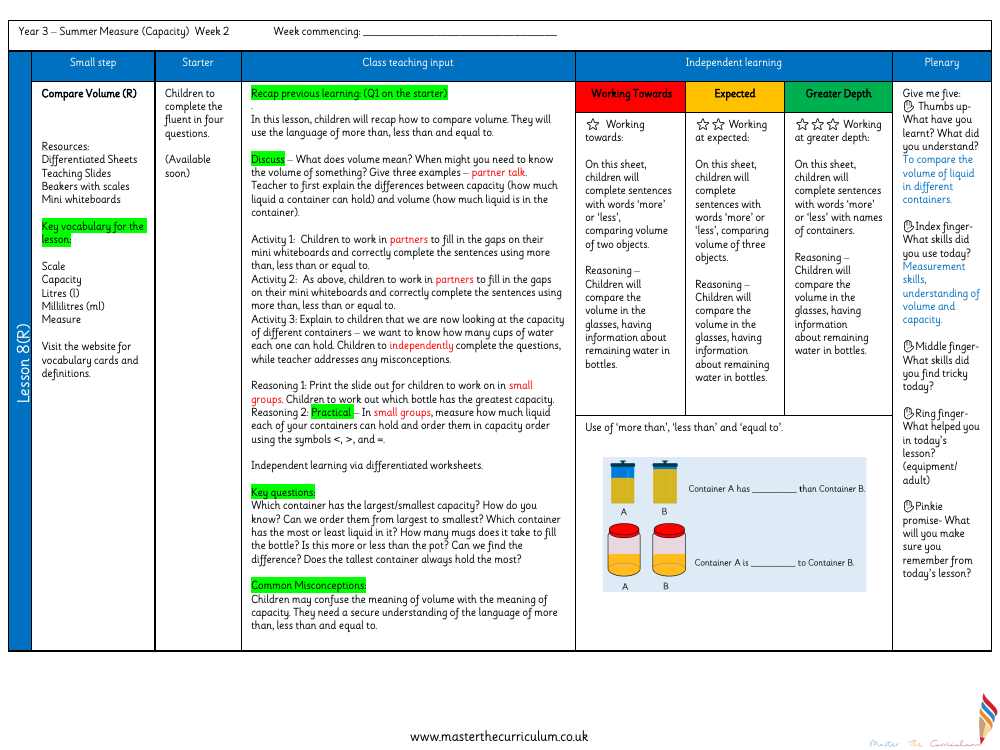
Maths Resource Description
In a Year 3 mathematics lesson on measure and capacity, students are set to explore the concept of volume and how it can be compared using the terms 'more than', 'less than', and 'equal to'. The lesson aims to clarify the difference between capacity—the maximum amount a container can hold—and volume—the actual amount of liquid present in the container. Key vocabulary such as 'scale', 'capacity', 'litres', 'millilitres', and 'measure' is introduced, with resources like vocabulary cards and definitions available to support learning. The lesson begins with a starter activity to review previous knowledge, followed by class teaching input where the teacher discusses what volume means and its practical applications.
During the lesson, students engage in a series of activities, starting with partner work using mini whiteboards to complete sentences that compare volumes. They progress to practical tasks involving measuring the capacity of different containers and ordering them accordingly. Independent learning is facilitated through differentiated worksheets tailored to various levels of understanding, from working towards the expected level to achieving greater depth. The lesson concludes with a plenary session to address any misconceptions, particularly the common confusion between volume and capacity. A 'Give me five' reflection activity encourages students to consider what they have learned, the skills they have used, the challenges they faced, and the key points to remember from the lesson, ensuring a comprehensive understanding of how to compare volume.
